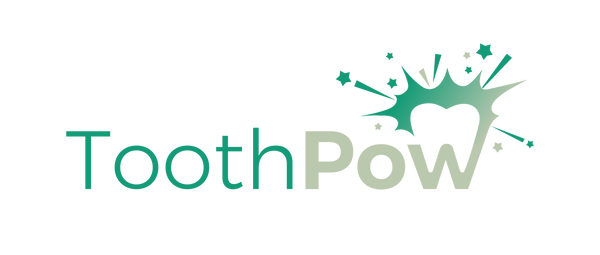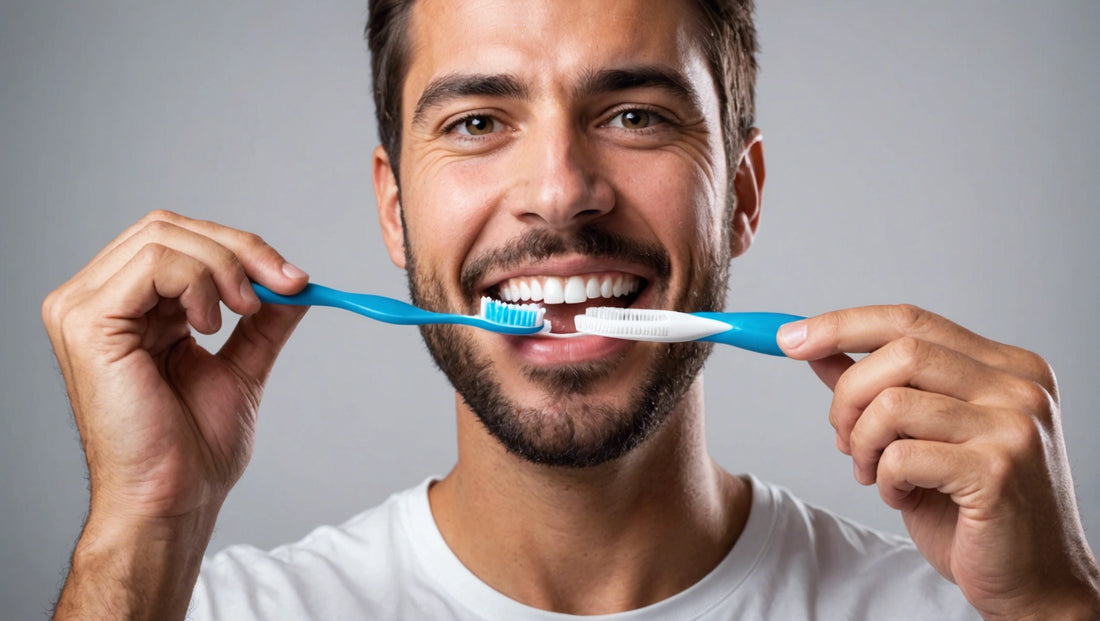Introduction
Proper tooth brushing is essential for maintaining good oral health. It helps prevent cavities, gum disease, and other dental issues. However, many people make common mistakes that can compromise their oral hygiene. This guide aims to provide detailed, step-by-step instructions on how to brush your teeth effectively, including the differences between manual and electric toothbrushes, as well as sonic vs. spinning circle bristles.
Why Proper Tooth Brushing is Essential
Prevention of Cavities and Gum Disease
Regular brushing removes plaque, a sticky film of bacteria that forms on your teeth. Plaque can cause cavities and gum disease if not removed daily. Effective brushing helps prevent these issues by keeping your teeth and gums clean.
Removal of Plaque and Bacteria
Brushing your teeth removes food particles and bacteria that accumulate in your mouth throughout the day. This helps prevent tooth decay and bad breath, contributing to overall oral health.
Maintenance of Fresh Breath and Overall Oral Hygiene
Consistent and proper brushing helps maintain fresh breath and a clean mouth. It also promotes healthier gums and reduces the risk of oral infections.
For more information on maintaining good oral health, visit ToothPow’s oral health blog.
Step-by-Step Guide to Proper Tooth Brushing Techniques
Step 1: Preparing Your Toothbrush and Toothpaste
Apply Toothpaste: Place a pea-sized amount of toothpaste on your toothbrush. Using too much toothpaste can create excessive foam and make it difficult to brush properly.
Wet the Bristles (Optional): Some people prefer to wet the bristles before brushing to soften them and create a gentler brushing experience. This step is optional and based on personal preference.
Step 2: Proper Brushing Technique
Position the Toothbrush: Hold the toothbrush at a 45-degree angle to your gums. This angle helps clean the gumline, where plaque and bacteria accumulate.
Use Gentle, Circular Motions: Move the brush in small, circular motions to clean the outer, inner, and chewing surfaces of each tooth. Avoid using a back-and-forth motion, as this can damage the gums and enamel.
Brush the Gumline: Focus on the area where your teeth meet your gums to remove plaque. Be gentle to avoid irritating the gums.
Brush Each Tooth Thoroughly: Spend at least 10-15 seconds on each section of your mouth, ensuring that all surfaces of each tooth are cleaned.
Step 3: Brushing Duration and Frequency
Brush for At Least Two Minutes: Use a timer or an electric toothbrush with a built-in timer to ensure you brush for the recommended time. Many people underestimate how long two minutes can be, so using a timer is helpful.
Brush Twice a Day: Brush once in the morning and once before bed. Brushing after meals can also help remove food particles and prevent plaque buildup.
Step 4: Cleaning Your Tongue
Use a Toothbrush or Tongue Scraper: Gently brush or scrape your tongue from back to front. This helps remove bacteria and debris that can cause bad breath.
Importance of Tongue Cleaning: Cleaning your tongue is essential for maintaining fresh breath and reducing bacteria in your mouth.
Step 5: Rinsing and Storing Your Toothbrush
Rinse Thoroughly: Rinse your mouth and toothbrush thoroughly with water to remove any remaining toothpaste and debris.
Store Upright: Place the toothbrush upright in a holder to air dry. Ensure it is stored in a way that allows it to dry completely to prevent bacterial growth.
For more detailed brushing techniques, check out ToothPow’s step-by-step guide.
Tools You Need for Effective Brushing

Choosing the Right Toothbrush (Manual vs. Electric)
Manual Toothbrushes:
Advantages: Cost-effective, widely available, easy to use. Ideal for those who prefer a simple, no-fuss brushing routine.
Disadvantages: Requires proper technique to be effective, no built-in timers. Manual brushing may not be as thorough as electric brushing if not done correctly.
Electric Toothbrushes:
Advantages: More effective at removing plaque, built-in timers, various brushing modes. Electric toothbrushes often come with additional features like pressure sensors to prevent hard brushing.
Disadvantages: More expensive, requires charging or battery replacement. They may also be bulkier and less convenient for travel.
Sonic vs. Spinning Circle Bristles
Sonic Toothbrushes:
How They Work: Use high-frequency vibrations to clean teeth. The rapid movements create fluid dynamics that help remove plaque even beyond the bristles' reach.
Advantages: Effective at reaching difficult areas, gentle on gums, reduces plaque. Sonic toothbrushes are often recommended for their superior cleaning capabilities.
Example: ToothPow Bamboo Sonic Brush.
Spinning Circle Bristles:
How They Work: Rotate in a circular motion to clean teeth. These brushes often mimic the motion used by dental hygienists during professional cleanings.
Advantages: Effective at cleaning each tooth individually, often includes pressure sensors. They are particularly good for targeting specific areas and providing a deep clean.
Example: Oral-B electric toothbrushes.
For a comprehensive comparison of toothbrush types, visit ToothPow’s toothbrush guide.
Selecting the Appropriate Toothpaste
Choose a fluoride-free toothpaste that suits your dental needs. ToothPow toothpaste, for example, contains natural ingredients that help remineralize and strengthen enamel.
Additional Tools
Tongue Scraper: Helps remove bacteria and debris from the tongue, improving breath.
Floss: Essential for cleaning between teeth and preventing plaque buildup. Regular flossing helps maintain gum health and prevents cavities in hard-to-reach areas.
Common Brushing Mistakes to Avoid
Brushing Too Hard
Brushing with too much force can damage your gums and enamel. Use gentle pressure to protect your oral tissues. If you’re using an electric toothbrush, let the brush do the work and avoid pressing too hard.
Using a Toothbrush with Hard Bristles
Hard bristles can be abrasive and cause gum recession. Opt for a toothbrush with soft bristles for a gentler clean. Soft bristles are effective at removing plaque without damaging your teeth and gums.
Not Replacing Your Toothbrush Regularly
Replace your toothbrush or brush head every three months, or sooner if the bristles are frayed. Worn-out bristles are less effective at cleaning. Mark your calendar or set a reminder to change your toothbrush regularly.
Neglecting Certain Areas of the Mouth
Make sure to brush all areas of your mouth, including the back teeth, gumline, and tongue. Neglecting these areas can lead to plaque buildup and cavities. Pay special attention to any dental work, such as crowns or braces, as they require extra care.
For more tips on avoiding common brushing mistakes, visit ToothPow’s oral health tips.

Tips for Encouraging Good Brushing Habits
Making Brushing Fun for Children
Use Fun Toothbrushes: Choose toothbrushes with fun designs or characters to make brushing more appealing for kids.
Sing Songs or Play Music: Make brushing time enjoyable with songs or a timer that plays music. This can help ensure they brush for the full two minutes.
Using a Timer or Electric Toothbrush with a Built-In Timer
Timers Help Ensure Proper Brushing Time: Use a kitchen timer or an electric toothbrush with a built-in timer to make sure you brush for the recommended two minutes. This helps ensure thorough cleaning and prevents rushing.
Setting a Routine and Sticking to It
Consistency is Key: Brush at the same times each day to build a habit. Morning and night are ideal. Consistent brushing helps reinforce the habit and ensures regular oral care.
For more strategies to encourage good brushing habits, check out ToothPow’s guide to building oral hygiene routines.
The Role of Regular Dental Check-Ups
Importance of Professional Cleanings and Check-Ups
Regular dental check-ups are crucial for maintaining oral health. Dentists can remove tartar, check for cavities, and provide personalized advice. Professional cleanings help maintain oral health and prevent serious dental issues.
How Dentists Can Help Improve Your Brushing Technique
Dentists can show you the proper brushing technique and recommend tools tailored to your needs. They can also identify areas you might be missing during your routine. Regular check-ups allow your dentist to monitor your oral health and catch potential problems early.
Recommended Frequency of Dental Visits
Visit your dentist every six months for a check-up and cleaning. This helps catch potential issues early and keeps your mouth healthy. Regular visits ensure ongoing oral health and provide an opportunity for professional guidance.
For more information on the importance of dental visits, visit ToothPow’s dental care blog.
FAQs About Tooth Brushing
How Often Should I Replace My Toothbrush?
Replace your toothbrush or brush head every three months, or sooner if the bristles are frayed. This ensures effective cleaning and prevents bacterial buildup. Regular replacement helps maintain optimal brushing performance.
Is an Electric Toothbrush Better Than a Manual One?
Electric toothbrushes are generally more effective at removing plaque and reducing gum disease. They offer features like timers and multiple brushing modes that enhance oral care. However, manual toothbrushes can also be effective if used properly.
What Type of Toothpaste is Best for My Teeth?
Choose a toothpaste that addresses your specific needs, such as sensitivity, whitening, or enamel protection. ToothPow’s fluoride-free toothpaste is an excellent option for natural oral care. Selecting the right toothpaste helps meet your individual dental needs.
For more answers to common questions, check out ToothPow’s FAQ page.
Conclusion
Proper tooth brushing techniques are essential for maintaining a healthy smile and preventing dental issues. By using the right tools, following correct brushing methods, and avoiding common mistakes, you can ensure optimal oral health. Remember to visit your dentist regularly and encourage good brushing habits in your family. With consistent care, you can enjoy a lifetime of healthy teeth and gums.
For more tips and products to help maintain your oral health, visit the ToothPow website.

